I love snacking on fresh cherries, and look forward to enjoying this bright stone fruit the moment I see them available at my local grocery store every June and July. And just recently I learned that cherries also have a winter growing season, which means I can sometimes get my hands on this favorite sweet fruit in the middle of winter, too.
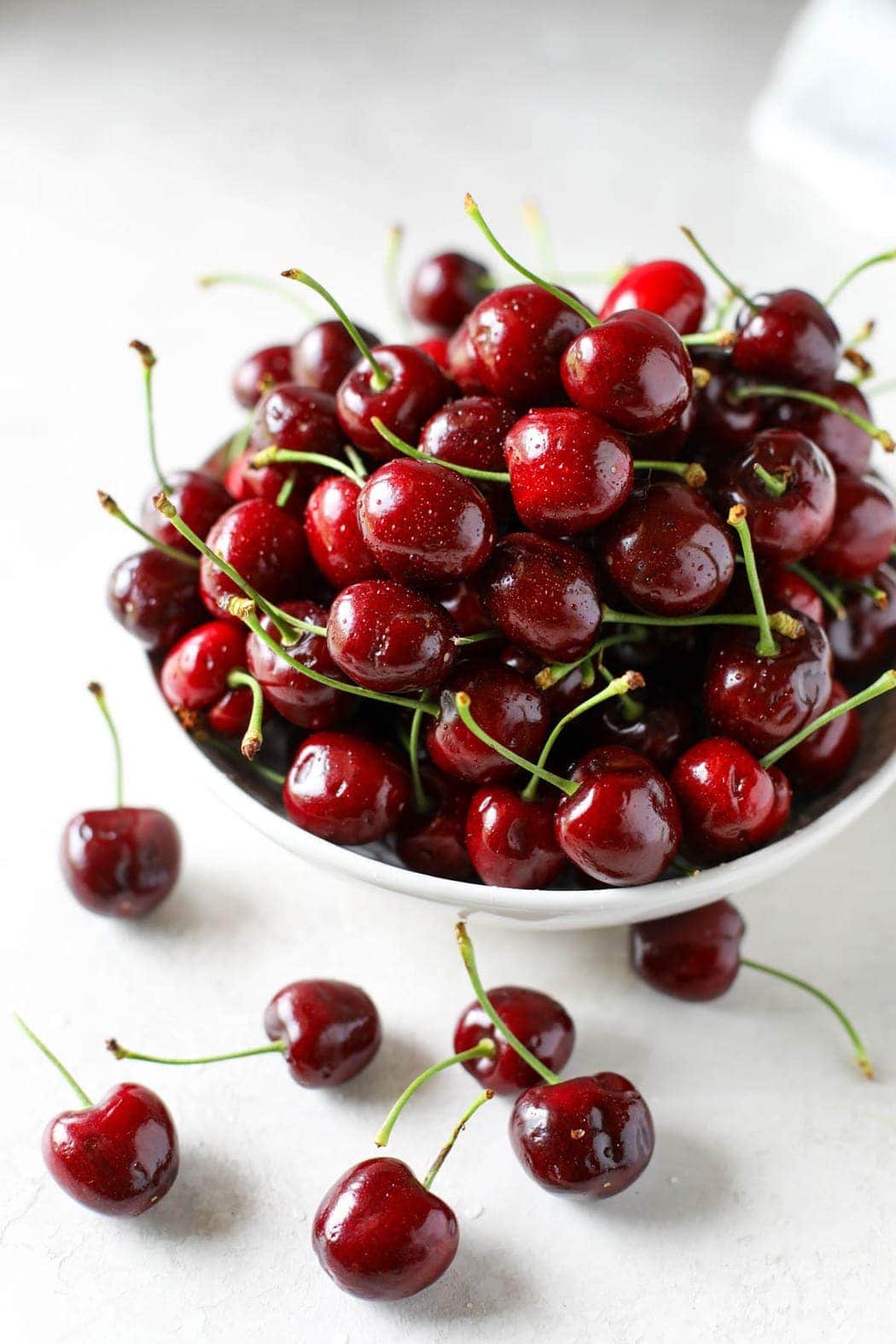
Popular Types of Cherries
I’m most familiar with dark purple Bing cherries and yellow-pink Rainier cherries since those are the ones I see the most often at my local store. But there are actually quite a few different types of cherries. Here are the most available:
- Bing cherries – grown in the southern U.S.; dark deep red purple color with an iconic heart shape and sweet flavor
- Rainier cherries – creamy colored yellow-pink with sweet flavor (though not as sweet as Bing cherries. Tip: the darker the yellow, the sweeter they are)
- Chelan cherries – these are very dark, which is why they are sometimes called black cherries. They often ripen first in the spring and have a mild sweet taste.
- Lapins cherries – I’ve heard it said that if you can get your hand on this type of cherries (which is a hybrid of Vans and Stella cherry varieties) you should. They’re only available for about two weeks every summer, but are quite sweet and flavorful.
- Tulare cherries – these still fall under the category of sweet cherries, but they have a tangy, tart finish after the sweetness; dark and round with a similar look as Bing cherries
- Montmorency cherries – a popular type of sour cherries, most often canned, turned into cherry pie filling, cherry juice, or dried cherries
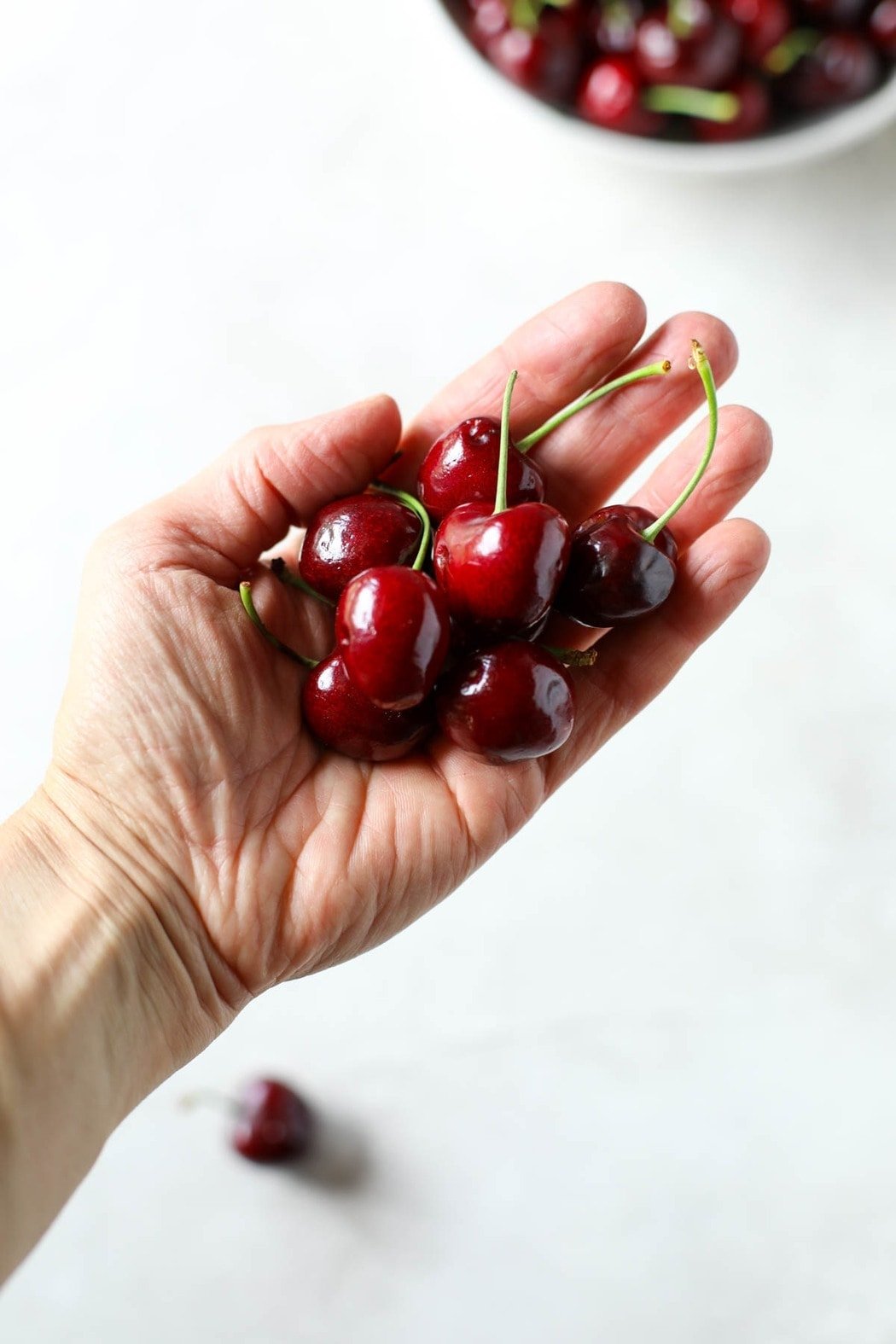
Enjoy Cherries Year Round
The U.S. fresh sweet cherry season is short. Fresh U.S.-grown sweet cherries are typically only available nationwide from mid-June to late-August, which means you’ll want to take advantage of them while they’re in season and at their peak of freshness and flavor.
But you can also find sweet fresh cherries in the winter time, which was news to me until very recently. Chilean-grown cherries, for example, are available November through February, since the growing season in Chile is opposite of that in the U.S. Many of the popular types of cherries, including Bing and Rainier, can be spotted in the produce section in late fall and in the middle of winter.
Want to enjoy the health benefits of sweet cherries year-round? Stock up whenever you see them available. And then you can freeze cherries, can them, or even dehydrate them to last longer and enjoy in recipes, like:
- Homemade Gatorade where tart cherry juice provides antioxidants, phytochemicals, natural melatonin, vitamins, minerals along with a tart cherry taste that contributes to the classic fruit punch flavor
- Low-Sugar 3-Ingredient Cherry Jam where frozen cherries are the base
- Dark Chocolate Cherry Energy Bites that call for dried cherries
- Cherry Pecan Granola with Quinoa which incorporates dried cherries
- Brussels Sprouts Salad where dried cherries add the perfect sweet flavor
Not only are fresh, sweet cherries delicious, but they also offer a host of health benefits, so today we’re sharing 5 Health Benefits of Sweet Cherries in case you needed a little nudge to drop a bag or two into your cart or basket the next time you’re cruising the aisle of the supermarket or rubbing elbows with the locals at the farmers market – if you live in the Northwest.
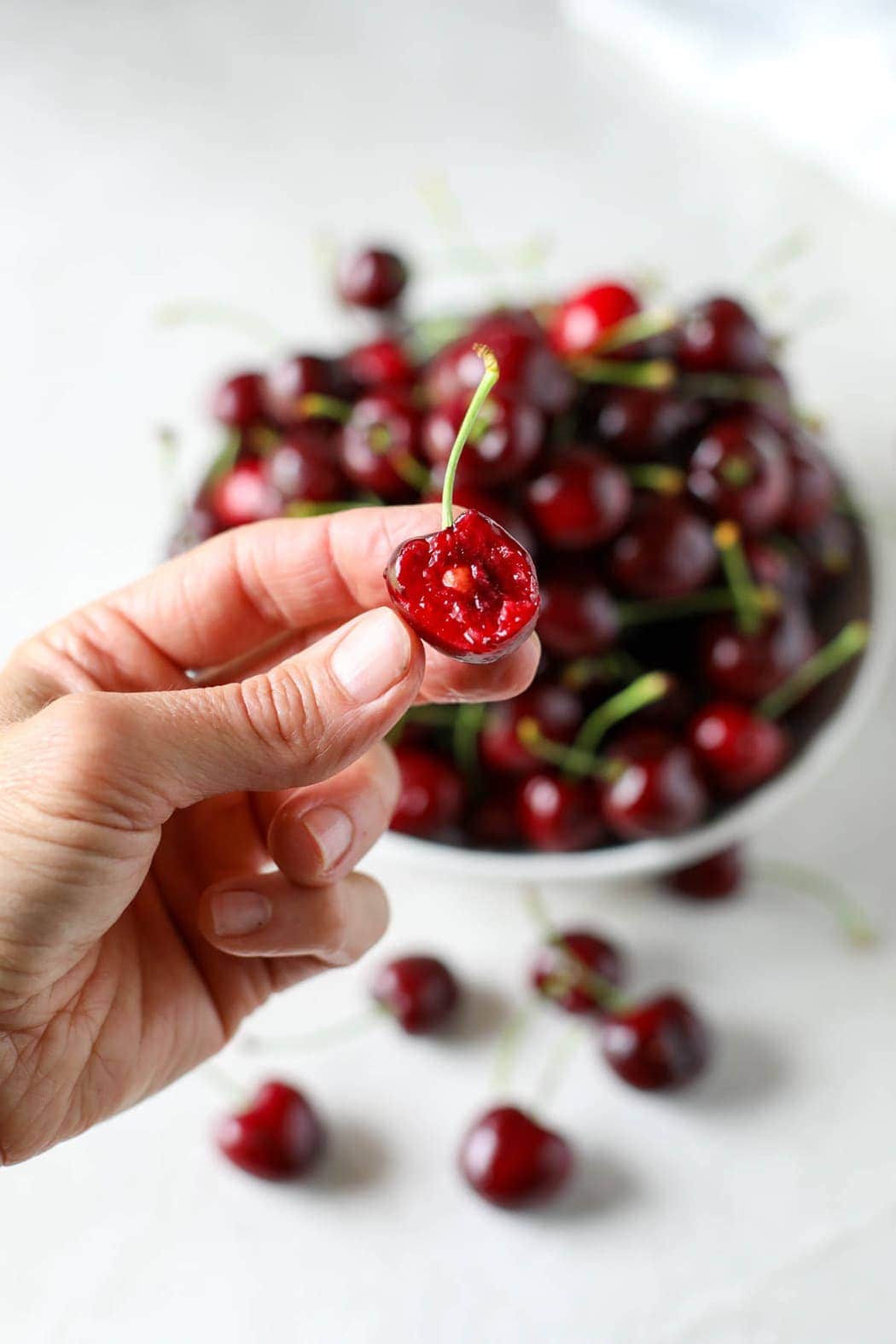
5 Health Benefits of Cherries
Both fresh cherries and tart cherry juice have been studied extensively for their health benefits, which are impressive. Here are some highlights:
- High in antioxidants – Research shows that the anthocyanins (strong flavonoid antioxidants) found in sweet and tart cherries may have the ability to “turn off” the enzymes that cause tissue inflammation in the same way that ibuprofen does, which means it may decrease your need for anti-inflammatory drugs in some cases.
- Packed with phytochemicals – Cherries contain ellagic acid, a naturally occurring phytochemical that research shows have antioxidant and anti-cancer properties. Studies have shown the cancer-fighting activity on cancer cells of the breast, esophagus, skin, colon, prostate and pancreas. Ellagic acid does this by binding with cancer-causing molecules, thereby making them inactive.
- Good source of natural melatonin – Studies show that naturally occurring melatonin is plentiful in cherries and connected to more restful sleep. Melatonin plays a role in controlling your body’s internal clock (circadian rhythms) and regulating sleep patterns. For this reason, I sometimes enjoy a handful of fresh sweet cherries before bedtime. Melatonin may also soothe irritability and headaches, which is yet another reason to add them to your cart.
- Good source of vitamins, minerals and dietary fiber – Cherries bring more to the table than great taste. They’re also a good source of vitamin C, potassium, iron, copper, zinc, and manganese. And since most Americans are deficient in fiber, cherries can be a delicious and easy way to help you get the recommended 25-35 grams of daily fiber for good digestive health.
- Lowered risk of gout – Gout is a painful form of arthritis associated with elevated blood uric acid levels and unfortunately, it’s all too common with an estimated 8.3 million Americans who suffer from gout attacks. Research shows a connection between cherries and lowered blood levels of uric acid levels.

Cherry Juice Has Benefits, Too
I wrote an article about four impressive benefits of tart cherry juice, including
- better sleep
- less joint pain
- lowered blood pressure
- muscle recovery
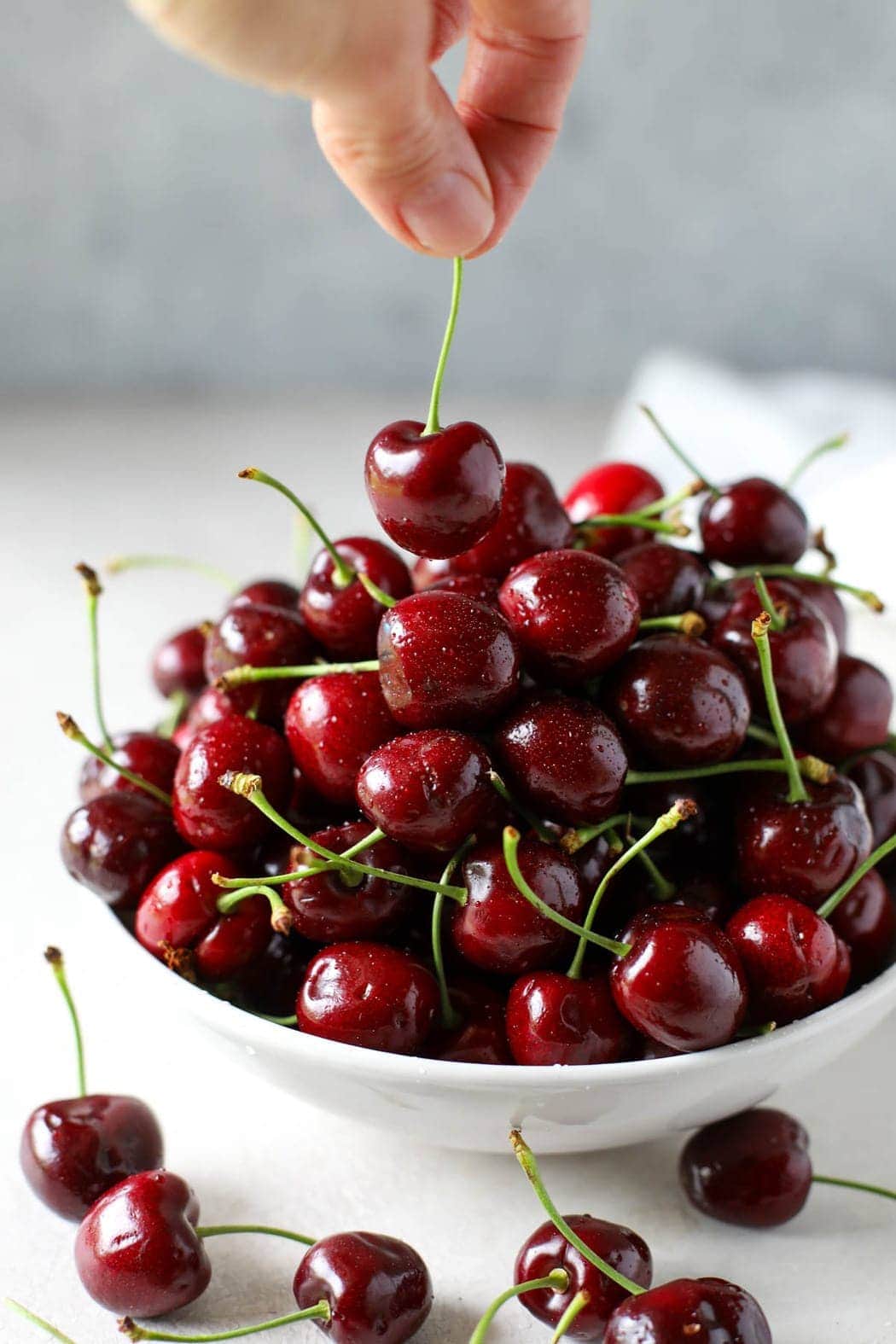
One Of My Favorite Healthy Snacks
I think sweet cherries are the ideal grab-and-go snack. I often pack them in my bag when heading out for a long hike or mountain biking ride. For me, both dark, sweet cherries and the yellow-red blushed Rainier cherries provide the perfect dose of sweetness to give me energy without a sugar crash. Because cherries are a good source of fiber, they release natural sugars into my bloodstream slowly, helping me feel fuller longer and giving me more sustained energy for whatever adventures my day brings.
For ultimate success, we highly recommend reading the tips in the full blog post above. All photos and content are copyright protected. Please do not use our photos without prior written permission. If you wish to republish a recipe, please rewrite the recipe in your own unique words. Link back to the source recipe here on The Real Food Dietitians. Thank you!
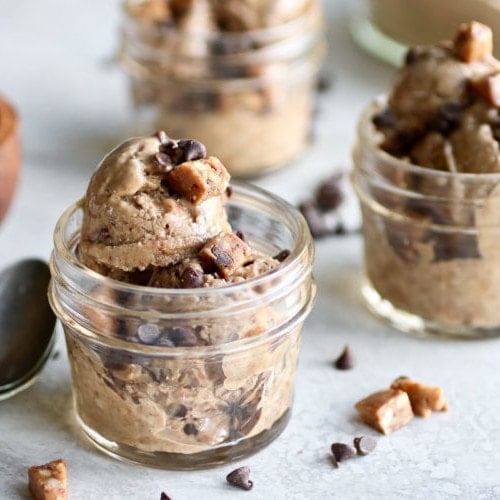

I am writing the message while eating the cherries:) Thanks for bringing the science based benefits of cherries in the article! It increased my love towards cherries more!
I love cherries and have a big bag of them. Someone told me they have worms or larvae in them. Looked online and this seems to be true. I can’t eat them now. What do you think about this?
Hmmmm. I haven’t heard that. I have cherry trees (North Stars… a sweet-tart variety) in my backyard and enjoy cherries from it every year and I’ve never seen worms or larvae in them unless they’ve been damaged or picked on by birds, in which case I could see that happening. I would suggest washing them thoroughly (preferably with produce wash or a little white vinegar adding to the washing water) then discarding any that are visibly damaged or have soft spots on them.
are these also low on carbs? I love cherries a lot!
Hi Charlene,
That depends on how many you’re eating. One cup of bing cherries provides 19 grams of carbohydrates. For reference, that’s roughly the same as a slice of whole-grain or gluten-free bread.